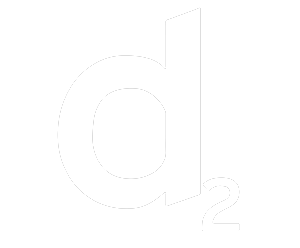3 Ways to Solve the Digital Divide.
The #1 Disadvantage Keeping Black America Behind in The Modern Era
By now, it probably comes as no surprise to you that there’s a digital divide in America. For those who aren’t aware, on average, black households and individuals have comparatively less access to broadband internet, home computers and laptops, and opportunities to master the skills required for success in the digital era.
If we dive into the numbers, the difference is staggering even at the surface level, 40% of Black American Households don’t have high-speed internet. As opposed to a meagre 28% of White American households not having access.
This divide has been recognized since the 1990s when the wealth and income disparity between white and black families became even more apparent with the advent of the personal computer and the internet.
And it seems that in 2023 the gap hasn’t shrunk.
The Big Issue
Fundamentally, the digital divide is a consequence of the wealth inequality that already exists in the Western World. The problem with this is the continuing expansion of technology as the dominant force in our lives and our economic health.
Currently, the median pay for jobs in tech is more than twice the median for all other occupations. The number of digital and IT jobs is expected to grow by 13% through 2030. Which is a startling 1.7x the overall rate of job growth.
Here’s where it becomes a problem for Black Americans…
Despite making up a solid 13% of the American Workforce, Black Americans are staggeringly underrepresented in the tech space, making up a mere 7.4% of digital workers. Even if the digital divide were to stay exactly as it is, the wealth gap between Black and White Americans will grow at an alarming rate by 2030.
Leaving Black families in an even worse position comparatively than they are now.
That’s not even considering the dramatic implications the digital divide has on the educational gap caused by lockdowns, which forced most schooling to be conducted remotely.
With 40% of Black families not having access to broadband internet, 31% of Black families not having a family computer, and 50% not having the necessary digital skills, it will be no surprise to discover that there is currently a widening educational gap for those who were forced to participate in long-distance schooling.
What Can We Do About It?
The difficult and unforgiving truth of the matter is that solving this problem requires collaboration on a number of fronts. Let’s take a quick look at what can be done and what’s already being done to solve this problem.
Funding
At present, the US Government has already made more than $425 billion dollars available to state and local governments to facilitate closing the digital divide. This funding gives state and local governments the opportunity to provide more affordable broadband and computer access to minority communities.
Awareness
While the amount of money being allocated toward solving this problem is entirely unprecedented and much appreciated. It’s only a step in the right direction. Massive action needs to be undertaken to establish open lines of communication between local governments and affected communities.
Once that’s done, we’ll have a clearer picture of which families need assistance and why and whether they’re actually receiving the access that the funding was allocated for.
Adequate Training and Pipelines
One of the biggest issues holding Black Families back is the lack of a digital skillset and culture in the community. Most of the tech job pipelines, run up from prestigious private schools to legacy high schools and universities, directly into corporate hiring offices.
While some work has been done at the top end to encourage Black and minority candidates into tech roles, little has been done to build pipelines at the ground level up.
Which is why I’m happy to announce the launch of Series M. Over the course of 8-weeks, I’ll be personally mentoring 60 candidates through the creation of a scalable business. With the aim of gaining funding through venture capital in the mid to long term.
The curriculum will help participants develop:
A pitch deck to quickly explain their business model to investors
Guidance on applying for funding
Pitch competitions to hone sales and negotiation skills
Much, much more.
It’s my goal to launch this program by Quarter 3 of 2023.
Interested applicants need to be:
Located in Atlanta ga or surrounding metro area, must be a U.S. Citizen or Permanent Resident.
Minority Certified: Minority Business Enterprise, Female Business Enterprise, Small Business Enterprise, and Disadvantaged Business Enterprise certifications.
In business for at least one year or more.
Willing to engage in the development of an online business, software-based product, service, or ecommerce store that will form a core piece of your current or intended business.
Send applications here.
In the long-term, my aim is to create black-owned tech businesses, that create new pathways for young black people to enter into the tech space at a time when growth is unprecedented.
In Conclusion
For arguably the first time in American history, we have a very real opportunity to close the wealth gap and eliminate one of the major sources of disparity in our society. The combination of government funding, awareness, and skill enhancement can only do it’s part if we do.
Jhanai Chasseau







